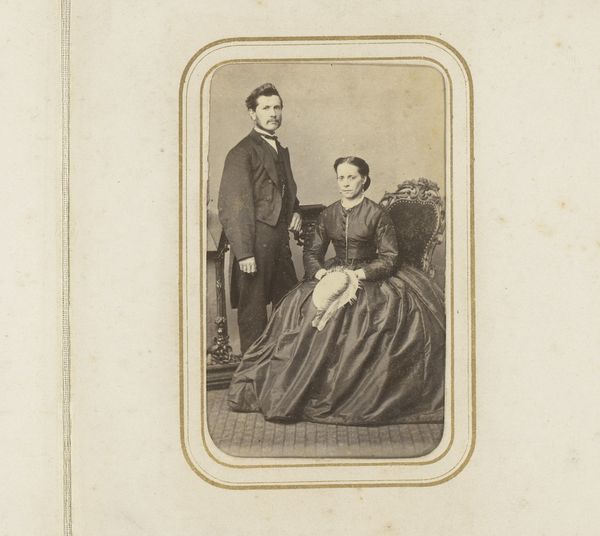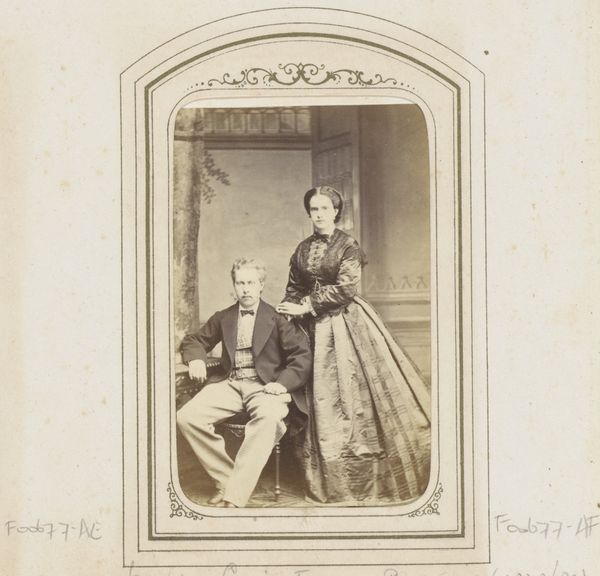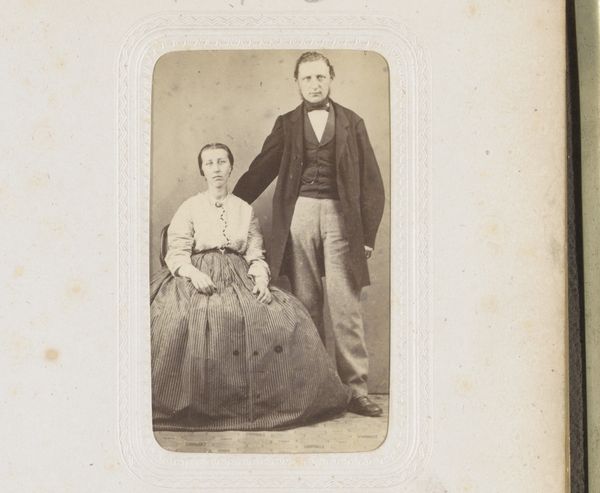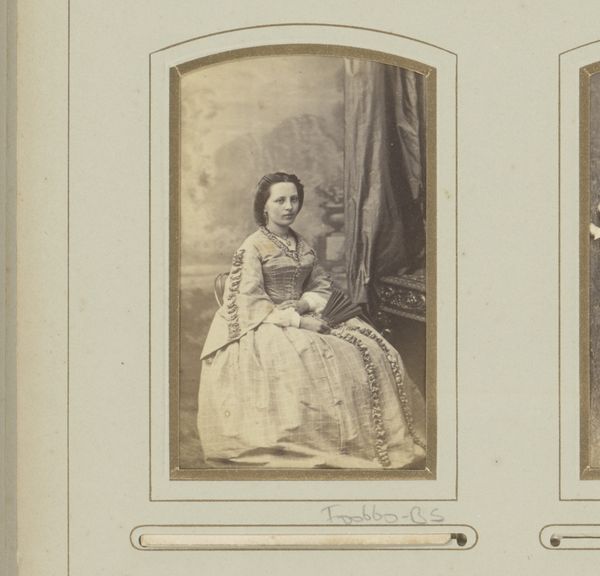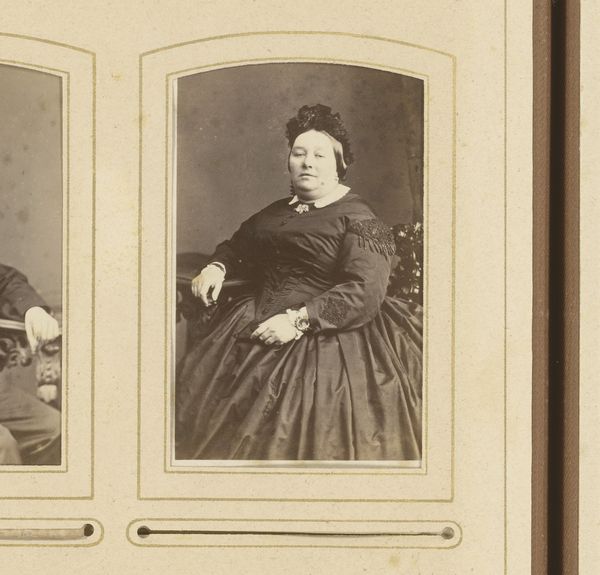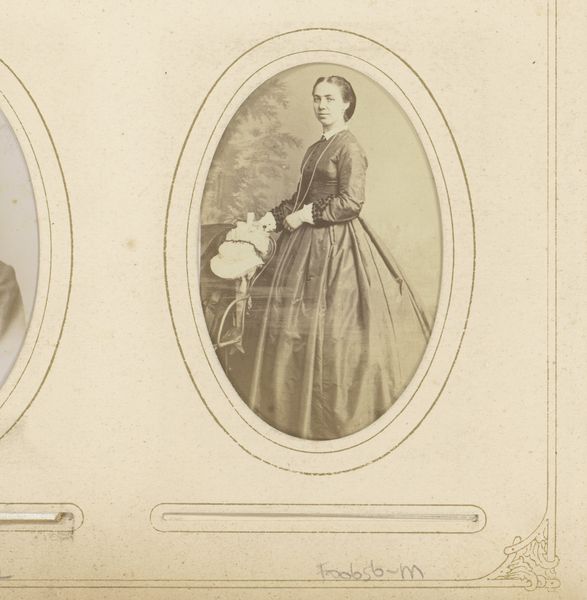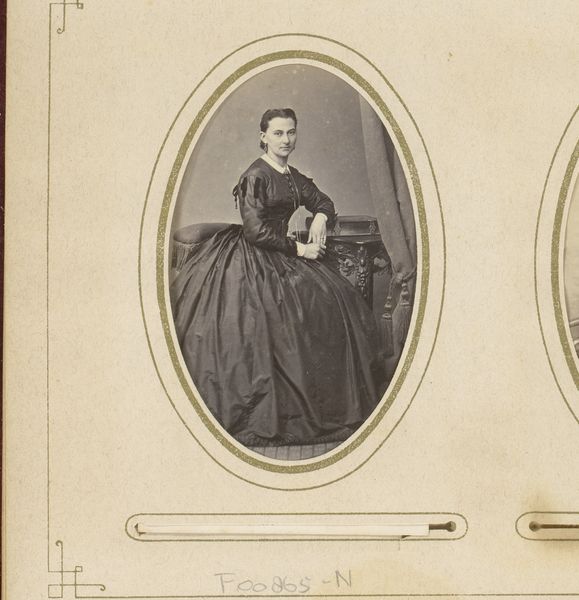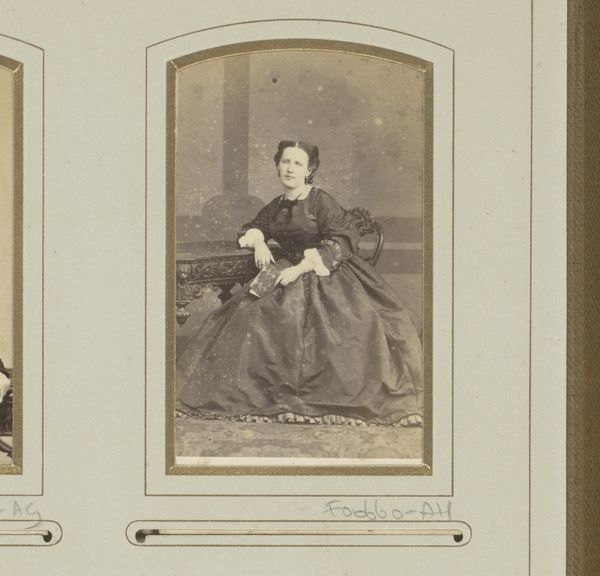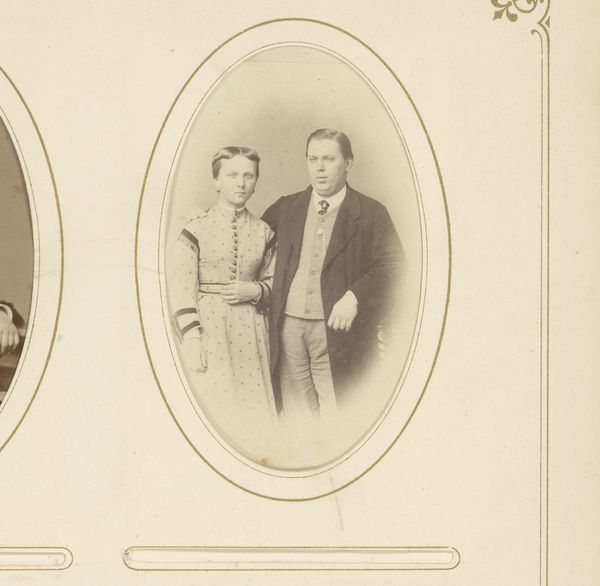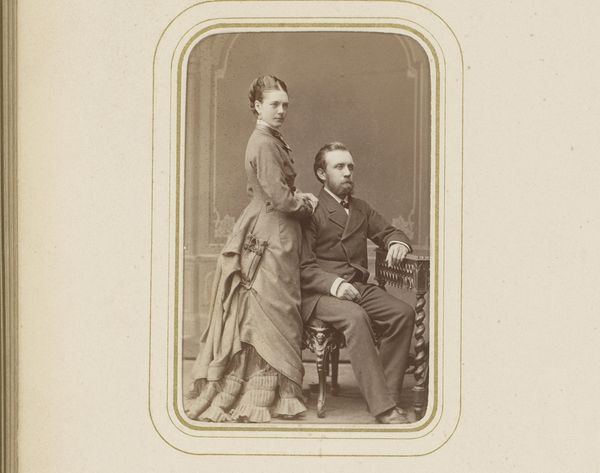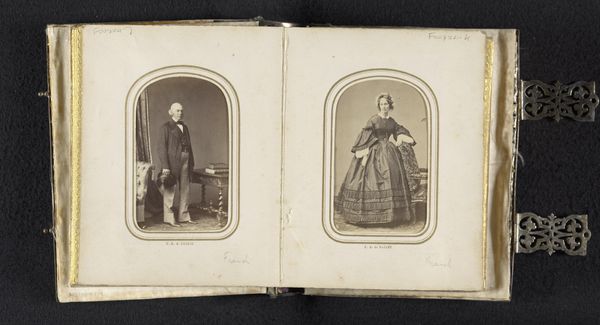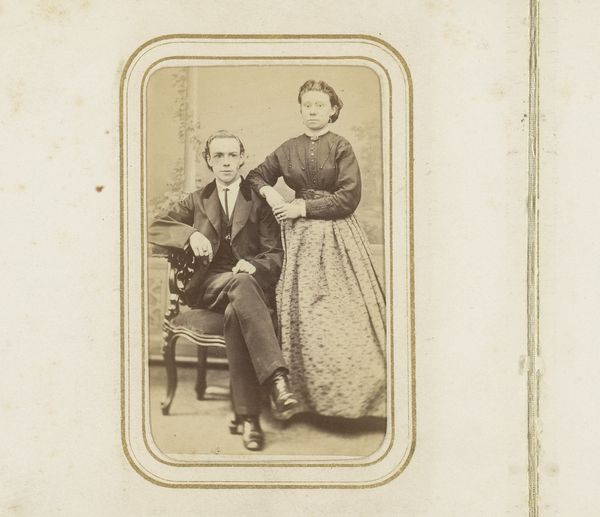
photography
#
portrait
#
photography
#
historical photography
#
genre-painting
Dimensions: height 82 mm, width 50 mm
Copyright: Rijks Museum: Open Domain
Editor: We're looking at an interesting piece here, “Portret van een man en vrouw,” taken sometime between 1859 and 1870, creator unknown, utilizing photography as the medium. It presents a stark formality; the gray scale adds to that, but it’s more than just the absence of color, it’s the arrangement of the figures, the lines of their clothing, and the use of light and shadow. How do you interpret the composition itself? Curator: The photograph, while seemingly straightforward in its presentation, offers a complex interplay of form. Consider the compositional balance: the man standing, a vertical element, juxtaposed with the seated woman, creating a horizontal counterpoint. This immediately establishes a visual tension, doesn't it? Editor: It does. It creates a structured, almost architectural feel to the image, rather than feeling candid or relaxed. Curator: Precisely. Now, observe the contrast between the textures—the smooth expanse of the man’s coat versus the patterned fabric of the woman’s dress. These variations aren't merely decorative; they establish distinct zones within the image. Editor: So you're suggesting that by studying these elements like the shapes, composition, and varying patterns we can start to grasp what this portrait is all about. Curator: Absolutely. The formal elements work in concert to communicate specific aesthetic values that might otherwise have been overlooked. And what we observe then invites further inquiry as to its possible meaning. Editor: I see. I always thought it was more about what was IN the photograph, but focusing on the *how* can give a fresh point of view! Thank you. Curator: My pleasure. It is the meticulous dissection of visual structures, where meaning often resides, wouldn't you agree?
Comments
No comments
Be the first to comment and join the conversation on the ultimate creative platform.
